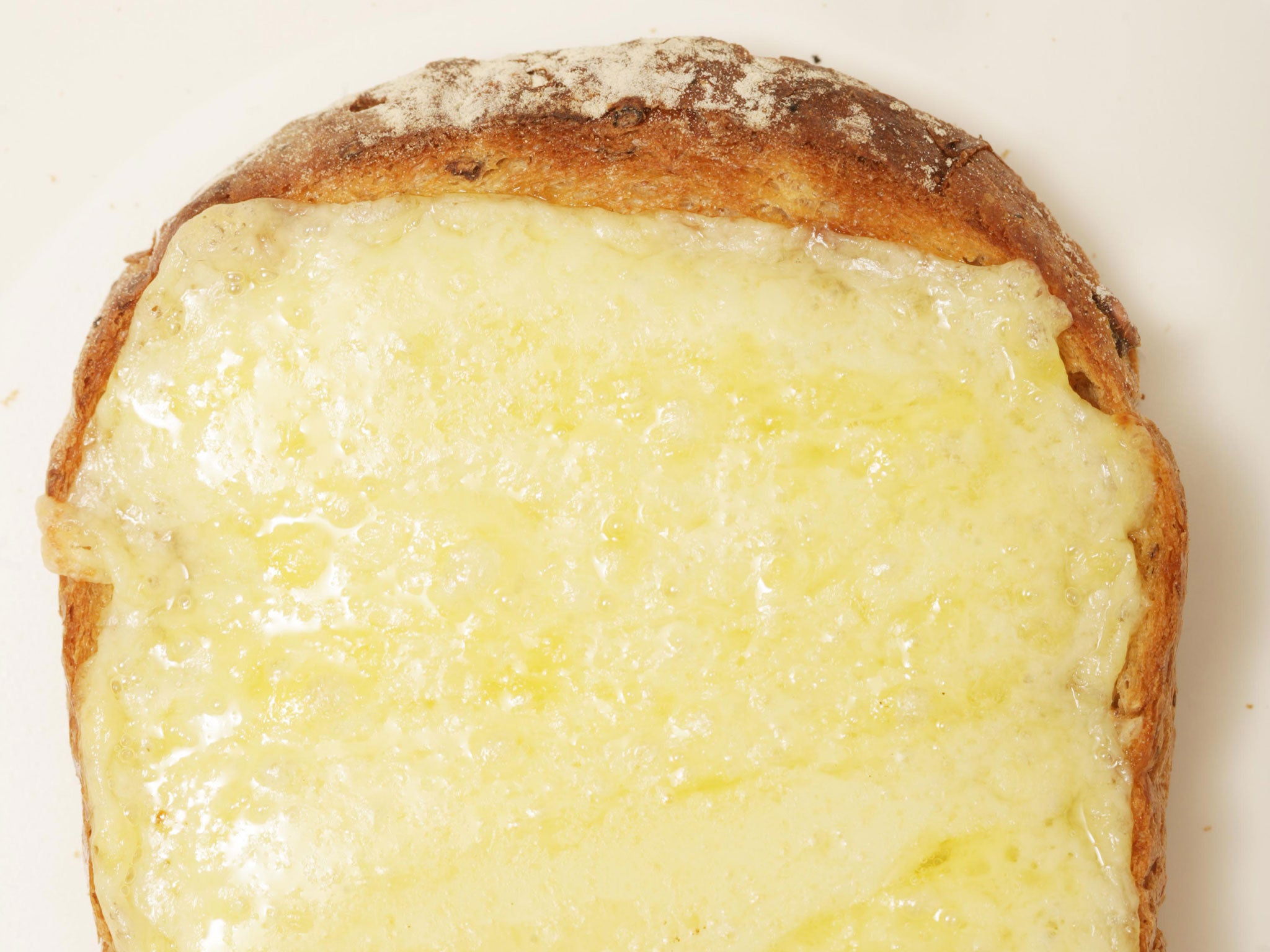Perfect cheese on toast: If b=bread, c=cheese and t=time, what is the point of all these formulae?
Yet another dubious equation – describing a recipe for a beloved late-night snack – has left some mathematicians unimpressed

The scientists at the Royal Society of Chemistry have come up with many complex mathematical formulae in their time, but perhaps never one this silly: today they unveil their sums for calculating how to make the perfect cheese on toast.
It comes only days after an equation was published to predict the murder rate in Brazil as its population increases – rarely can there have been two formulae so far apart in the seriousness of their subject matter. Yet whether they are of vital importance to humanity or designed simply for some silly season fun, it seems a new mathematical formula appears every other day.
Mathematicians create formulae that can have a huge impact on society – with the Brazilian model constructed by a team from State University of Maringa a perfect example.
In a country with some of the most violent cities in the world, anticipating crime is a potentially lifesaving exercise and can be applied to other issues including literacy.
Such calculations, though, do not always have a positive on the world. The Black-Scholes formula, created by US economists Fisher Black and Myron Scholes, is widely blamed for the recent global financial crash. It gives traders a theoretical estimate of “options” – financial contracts that give the buyer the right, but not an obligation, to buy or sell an asset at an agreed price on or before a specified date. However, within a short time of the formula being applied to real-world finance, banks and hedge funds became reliant on the equations and traditional traders were knocked out. The financial system became susceptible to over-simplification of the maths and mistakes. The rest, as the world’s still-stuttering economy shows, is history.
So, where does grilled cheese fit with the formulae big guns? In the words of the British Cheese Board, which worked alongside the chemists, it wanted to “undertake a series of rigorous tests” to determine the formula. After “careful consideration of optimum grilling conditions” and the width and breadth of the cheese and bread, they came up with the following: 150g of hard cheese on white bread, grilled for four minutes at 115C, 18cm from the grill. A few simple substitutions justified the formula designation: for example, ‘a medium slice of white bread’ was expressed as ‘(10mm* x wB)’.
These kind of marketing exercises, using maths as advertising tools, do not amuse all mathematicians. Nick Ovenden, a mathematics lecturer at University College London, was once asked by a PR company to create the formula for the perfect tennis serve. He told The Independent that he will never respond to such a request again. “There are often articles with ridiculous equations that do a big disservice to the subject,” he said.
“These equations provide no useful value. Worse still, they distort perceptions of what proper mathematical research is about and do not inform on what amazing contributions mathematics can make to society.”
Maths should have a high profile in the media, Dr Ovenden said. But the public are distracted from amazing equations used, for example, by search engines or to design heart valves. He described how his tennis equation appeared in the media but “not one newspaper published a single equation probably because it wasn’t in the form A+B-C=D”.
“You get the sense that if I had spent five minutes and come up with something completely nonsensical, like ‘Murray’s wearing his favourite shirt + the roar of the crowd – the number of break points not converted = how good the serve is’, that might have actually been shown in an article. As a result I cannot ever see myself responding to such a request again.”
Other mathematicians disagree. Jeremy Hodgson, professor of mathematics education at Kings College London, believes the cheese on toast formula shouldn’t be mocked. “A recipe is a formula,” he said. “Heston Blumenthal will take a very scientific approach and will have very precise notions of what to use.
“Cheese on toast is a bit of fun. It is expressing a formula in funny, simple terms but it is expressing something real. We do express recipes in terms of formula, just without xs, ys and bs. Having ways to have fun with maths is quite important too.”
Subscribe to Independent Premium to bookmark this article
Want to bookmark your favourite articles and stories to read or reference later? Start your Independent Premium subscription today.

Join our commenting forum
Join thought-provoking conversations, follow other Independent readers and see their replies